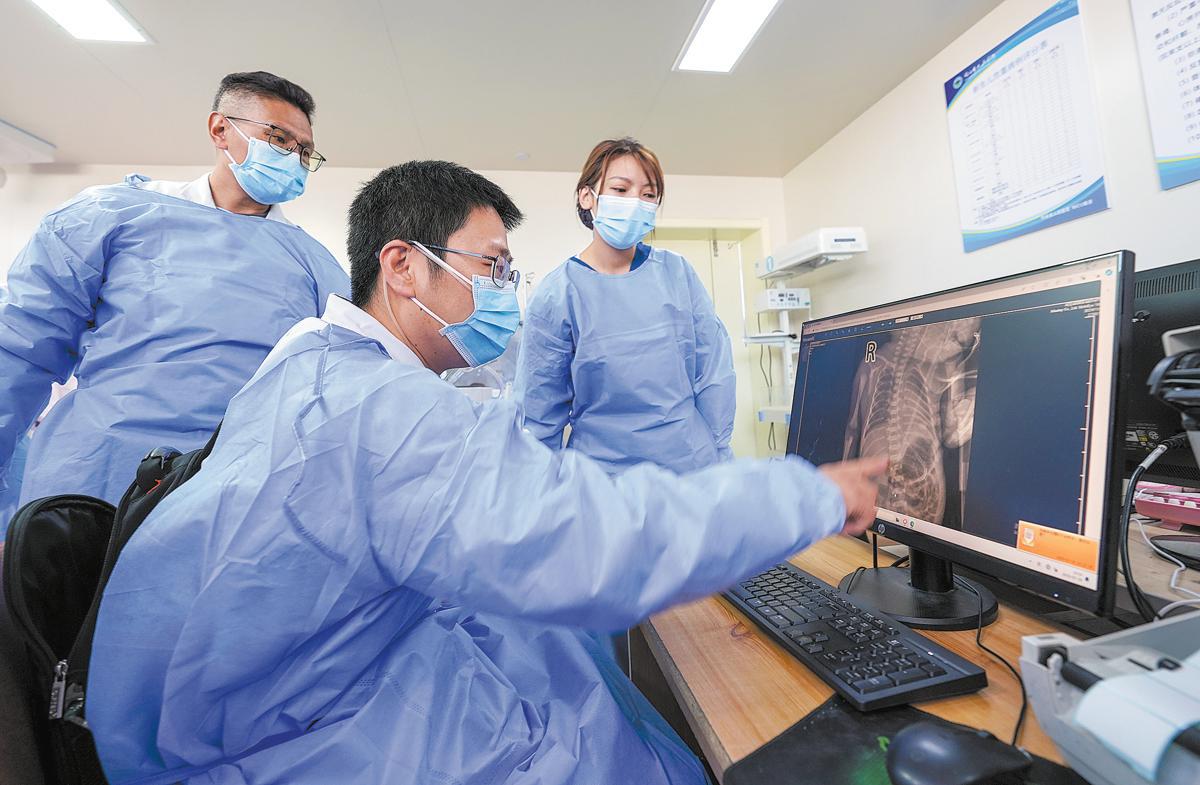Paired support sends neonatal care to Nagqu
Improved skills, techniques help reduce infant mortality in Xizang autonomous region


Tian promptly assisted the local team in replacing the inappropriate devices with neonatal ventilators and began training them on how to correctly set up and calibrate the machines.
"Although I provided foundational knowledge in the form of lectures, I found that the most effective teaching method is hands-on demonstration at the bedside," he said.
"Showing them how to adjust oxygen flow settings in real time based on each baby's condition proved far more effective. Now, the local doctors have become highly proficient in operating these new ventilators independently," he added.
In recent years, local pediatricians have progressively mastered a range of advanced neonatal treatment techniques thanks to the medical assistance program.
These include blood exchange transfusion, pulmonary surfactant replacement therapy — a standard treatment for neonatal respiratory distress syndrome — and umbilical venous catheterization, which involves placing a thin, flexible tube into a blood vessel to allow the safe delivery of intravenous nutrition and medications.
One of the most memorable cases for Tian was that of a newborn weighing just 1,000 grams who had multiple life-threatening conditions, including respiratory failure, sepsis and internal bleeding.
"One day, the infant's blood oxygen saturation levels suddenly became highly unstable. A chest X-ray confirmed pneumothorax, or collapsed lung," Tian said. "We immediately switched the ventilator to high-frequency mode and performed an emergency air extraction procedure.
"I could feel myself trembling slightly throughout the intervention. We drained about four to five liters of air before the baby's heart rate and breathing finally stabilized," he said. "That baby has since been discharged. It was an intense fight."
Tian said that the hospital is now capable of performing the majority of advanced neonatal intensive care procedures. The current focus is on refining the precision of ward management and optimizing clinical protocols.
"For instance, we introduced point-of-care ultrasound for newborns this year," said Tian. "This allows us to perform essential ultrasound examinations right at the bedside, eliminating the need to transport these vulnerable infants to separate imaging facilities."
Jigme Dorje, the senior local pediatrician, said that he has personally performed umbilical venous catheterization on four patients since observing Tian's technique last year.
Beyond surgical skills, Jigme Dorje emphasized that he has gained a broader, more systematic understanding of neonatal care management — including specialized feeding and weight monitoring methods.
"We've learned how to calculate the precise amount of feeding required based on a curve that correlates with the baby's age and weight," he said. "This knowledge has been crucial in helping premature infants maintain healthy growth patterns, thereby reducing their length of stay in the hospital and lowering the risk of hospital-acquired infections."
Official data shows that between 2017 and 2022, the infant mortality rate in Xizang fell by some 33 percent to seven deaths per 1,000 live births, and the mortality rate for children under 5 years old decreased by 40 percent to 8.2 per 1,000.
Contact the writers at wangxiaoyu@chinadaily.com.cn




































